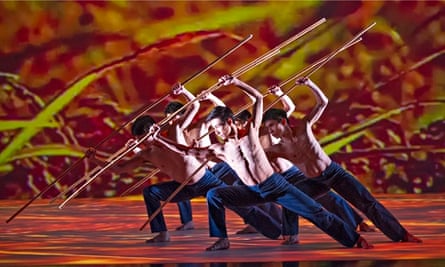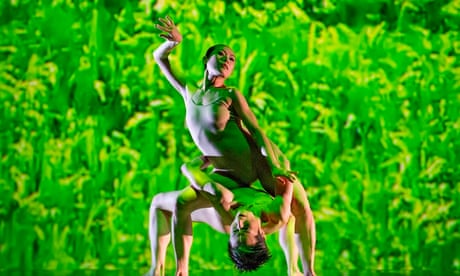Back in the 1970s, Lin Hwai-min emerged as one of dance's original multiculturalists, drawing his language from western contemporary dance theatre as well as Chinese tradition. But in his latest work, Rice, Lin goes right back to his roots, to the Taiwanese rice fields of the Chih Sheng valley, and to the cycles of weather and work that govern them.
The production opens on groups of women who track the stage in a slow dance of labour. As their bodies rise on a sharp intake of breath and lower on a percussive slap of the feet, the women are framed by video footage of the rice fields – of snow melting and small green shoots poking through the earth. The effect is beautiful, yet the subject matter seems too narrow, too distant for a full-length work. Just as our concentration wavers, however, Rice starts to broaden its scope. Its narrative is driven by the magnificent video footage of Howell Hao-jan Chang, which draws us deeper and deeper into the Chih Sheng landscape, alternating between hallucinatory closeups of soil and crops, and dizzying perspectives of mountains and sky.

Simultaneously, Lin widens the scope of his choreography. Mass ensembles take on an elemental quality, as the drift of the dancers' arms and the sway of their bodies evokes the ripple of wind and rustle of crops. Individual dances of work and play chart a more universal cycle of youth, maturity and age.
It's a complex play of forces to hold in balance, and Lin doesn't always succeed. Some of the slower sections pall, and a musical score that alternates Hakka folk music and Maria Callas recordings too often registers as a forced gesture of eclecticism. But in the final section, as the dancers move in staggered patterns of weariness, as snow gathers on the mountain and Callas sings from Strauss's Four Last Songs, Lin attains a sharply moving synthesis of man and nature, east and west, death and rebirth. Rice becomes a dance of the elements, Lin's own song of the earth.

Comments (…)
Sign in or create your Guardian account to join the discussion